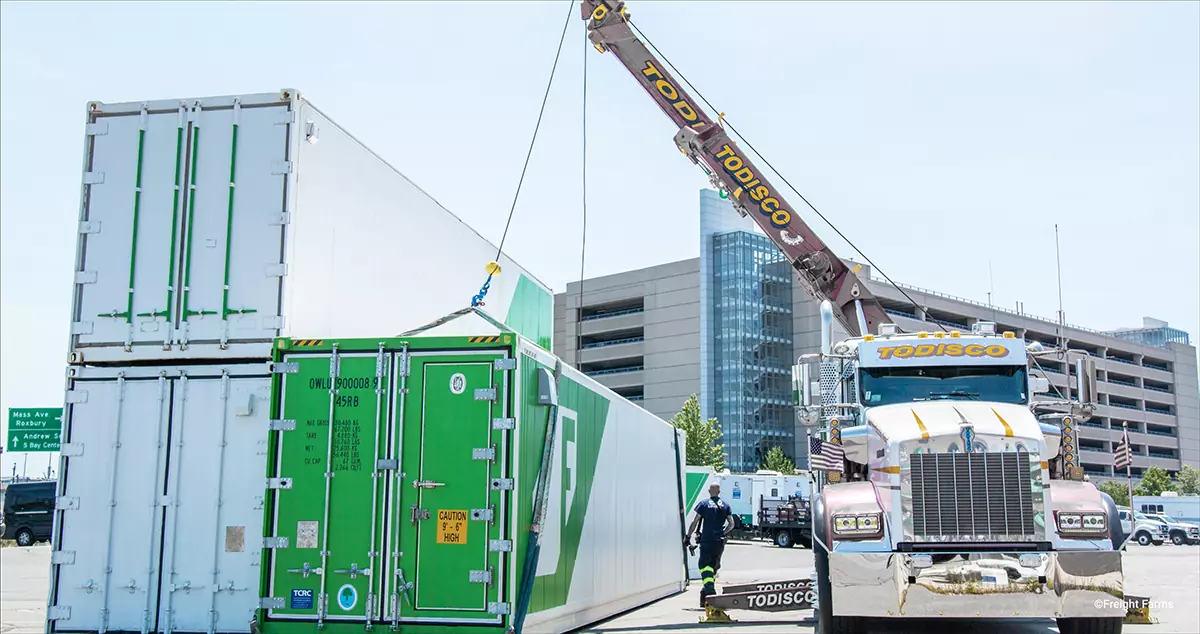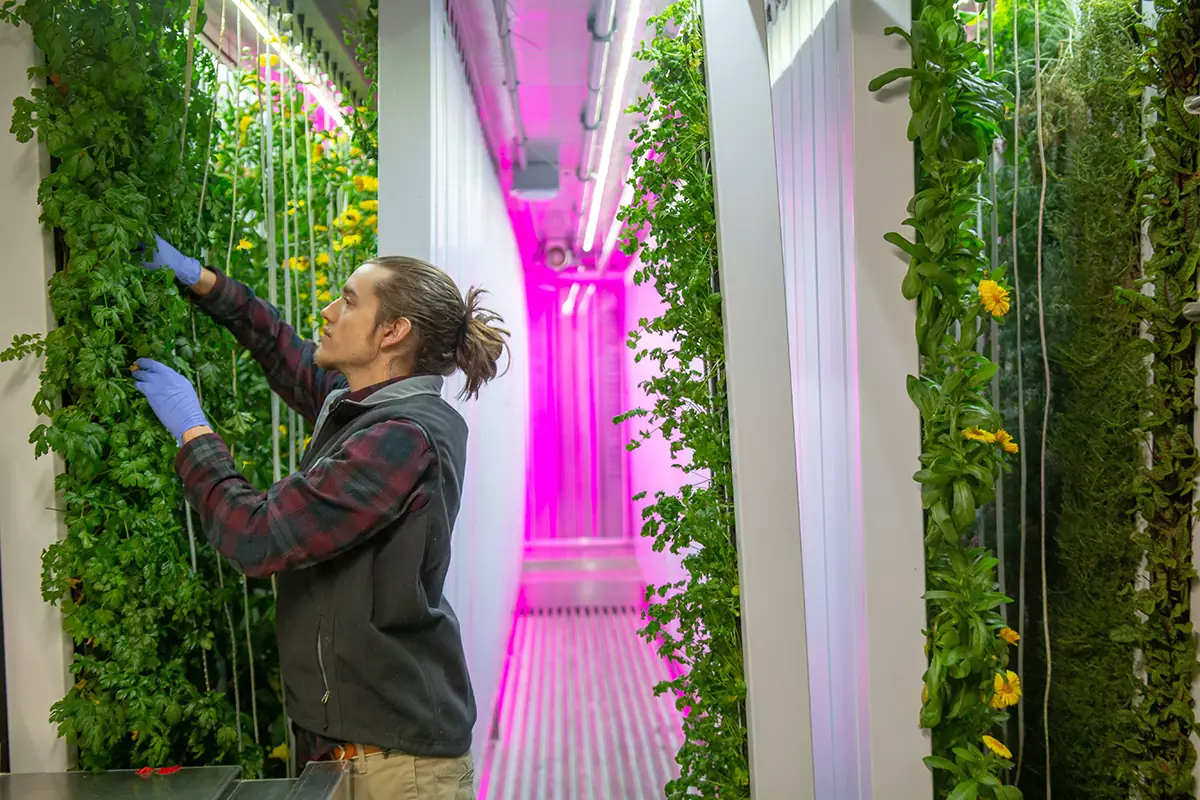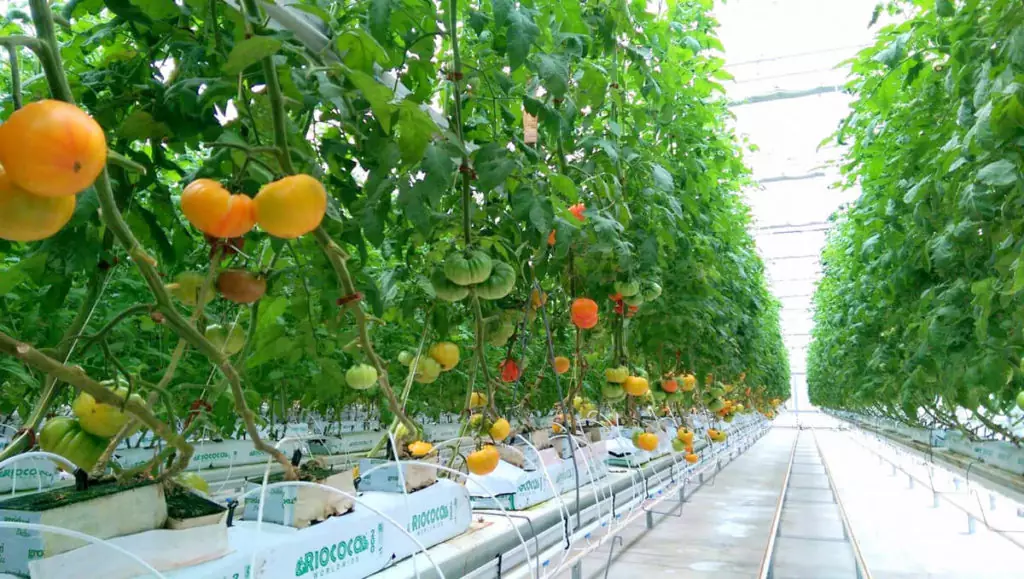With the loss of prime agricultural lands, degradation of soils, increase in water pollution, and climate change, the future of food production is becoming forced to adapt to difficult modern challenges. Innovative urban farming techniques such as hydroponic vertical farms, rooftop farms, or aquaponics seek to address these challenges by sustainably growing food in the heart of the city where it is locally consumed. Decentralized farms that can serve local communities, made possible by hydroponics and modernized farming practices, will undoubtedly be the sustainable food production model of tomorrow.
The emerging smart farming industry is beginning to take a similar approach to hydroponic cultivation by utilizing technology to monitor and control every aspect of the food production process.

Improving Food Security with Decentralized Food Production
In 2012, Hurricane Sandy exposed the vulnerability of the East Coast’s centralized food distribution system when the hurricane nearly missed Hunt’s Point Distribution Center, the world’s largest centralized food distribution hub that provides wholesale food to the entire eastern coastal seaboard. A storm surge from rising seas flooded major highways and blocked wholesale food distribution trucks from delivering food. This, combined with a power loss that shut down refrigerators, nearly plunged the region into a temporary food shortage. Reliance upon centralized food production and distribution systems like vast monocultures or foreign imports is becoming increasingly problematic due to threats from climate change or global pandemics like Covid-19.
In an attempt to reduce the 1,200 miles that the average food product travels before reaching a consumer’s plate, urban farmers are expanding onto rooftop farms and into repurposed freight containers to bring fresh food grown locally into the city center. Consuming food closer to the place it was produced dramatically reduces the carbon footprint from the energy used during transportation and supports local businesses.
Water Conservation & Growing Food with Less Water


Additionally, agriculture accounts for 80% of America’s water usage, and with mega-droughts in the near forecast, food production practices will be forced to become more efficient with water usage. Hydroponic farming has already been proven to be more than 95% more efficient with water usage when compared to traditional agriculture. The Greenery, a state of the art hydroponic vertical farming shipping container produced by Freight Farms, is able to grow 13,000 plants while using only 5 gallons of water per day! The Greenery also comes equipped with a Stealth 300 Reverse Osmosis System to provide the container farm with the purest water possible.
Reclaiming and re-using water within these facilities can help them become even more efficient. The Automated Reclaim Condensate System can reduce water usage up to 80% by reclaiming HVAC condensate water that would normally go down the drain. The ARCS can also be used for rainwater harvesting, directly purifying and transferring rainwater into the facility as if it was raining inside!
Reverse Osmosis for Commercial Hydroponic Food Production
Reverse osmosis systems are common in commercial hydroponic food production facilities wherever pure water is essential, like hydroponic tomato, cut flower, orchid, or mushroom farms. Increasingly, modern urban agriculture methods such as vertical farms, rooftop farms, or container farms rely on commercial reverse osmosis for a consistent, pure water base to mix nutrients with.

Holy City Farms, a hydroponic tomato farm on an island off South Carolina, had too much sodium and chloride in their water, inhibiting plant growth. After using a commercial reverse osmosis system, they were able to increase yields by removing all contaminants and starting with a pure water base for their nutrients. They were also able to conserve water by dumping wastewater less frequently and recirculating the nutrients for a longer amount of time.
Innovating Sustainable Agriculture with Commercial Aquaponics
Aquaponics combines the best attributes of hydroponics and aquaculture by utilizing a closed-loop system that mimics natural aquatic ecosystems without the need to discard wastewater or add chemical fertilizers. The closed loop system uses beneficial bacteria on plant roots to convert ammonia from fish waste into nitrates that facilitate healthy plant growth, which in turn purifies the water for the fish. It is one of the most sustainable forms of agriculture and can produce 10 times the crop yield per acre while using 90% less water than conventional farming.
Managing water quality for aquaponics and aquaculture is essential whenever cultivating any aquatic organisms like fish or coral. Important water quality parameters like pH, alkalinity, hardness, ammonia, and nitrates must be closely monitored so that fish can survive and the delicate closed-loop ecosystem can thrive. If any of these contaminants are too high in the source water, a commercial reverse osmosis system is required to lower the contaminants in the water used to fill and top off the system. It is always recommended to top off aquatic systems with RO water, so that the minerals do not build up in tanks due to water loss from evaporation. Additionally, chlorine and chloramines must be removed from city water as chloramines are such a strong disinfectant that they are capable of killing fish and other aquatic organisms.
Water Issues Will Define the Future of Food Production
Attempting to produce food for the future that can sustain projected population growth while battling extreme threats from climate change will require a technological revolution in the agriculture industry. Water efficiency and water quality will be the center of this transition. Pure water quality, water reuse and efficiency, and minimum liquid discharge will be crucial aspects of modern-age agriculture.


